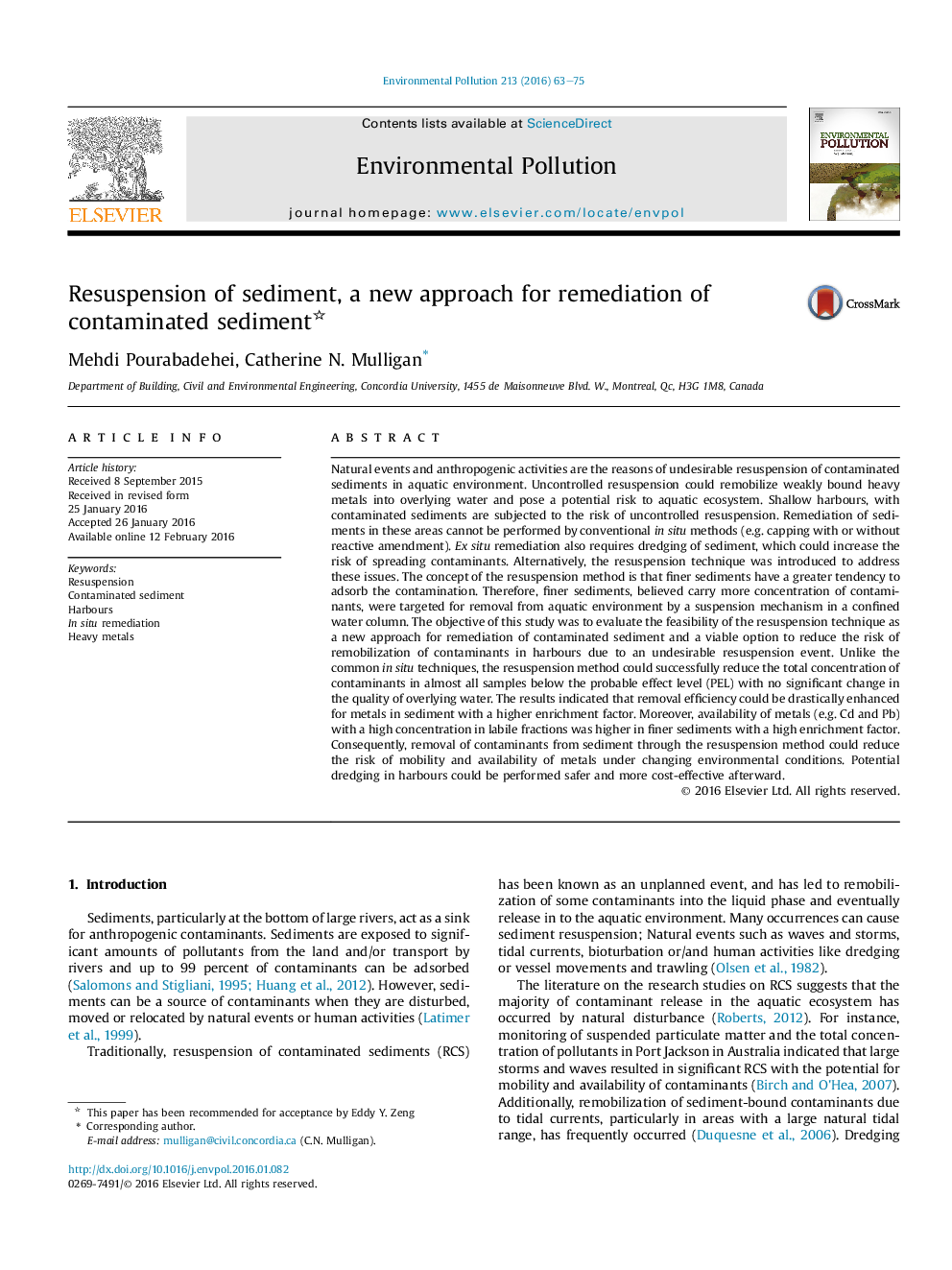| کد مقاله | کد نشریه | سال انتشار | مقاله انگلیسی | نسخه تمام متن |
|---|---|---|---|---|
| 6314815 | 1619160 | 2016 | 13 صفحه PDF | دانلود رایگان |
- This method targets the finer sediments with higher concentrations of pollutants.
- The finer sediment with high enrichment factor showed higher metal removal.
- Acceptable contaminant levels were reached by removal of a small amount of sediment.
- This technique is simple and could potentially reduce the need for dredging.
Natural events and anthropogenic activities are the reasons of undesirable resuspension of contaminated sediments in aquatic environment. Uncontrolled resuspension could remobilize weakly bound heavy metals into overlying water and pose a potential risk to aquatic ecosystem. Shallow harbours, with contaminated sediments are subjected to the risk of uncontrolled resuspension. Remediation of sediments in these areas cannot be performed by conventional in situ methods (e.g. capping with or without reactive amendment). Ex situ remediation also requires dredging of sediment, which could increase the risk of spreading contaminants. Alternatively, the resuspension technique was introduced to address these issues. The concept of the resuspension method is that finer sediments have a greater tendency to adsorb the contamination. Therefore, finer sediments, believed carry more concentration of contaminants, were targeted for removal from aquatic environment by a suspension mechanism in a confined water column. The objective of this study was to evaluate the feasibility of the resuspension technique as a new approach for remediation of contaminated sediment and a viable option to reduce the risk of remobilization of contaminants in harbours due to an undesirable resuspension event. Unlike the common in situ techniques, the resuspension method could successfully reduce the total concentration of contaminants in almost all samples below the probable effect level (PEL) with no significant change in the quality of overlying water. The results indicated that removal efficiency could be drastically enhanced for metals in sediment with a higher enrichment factor. Moreover, availability of metals (e.g. Cd and Pb) with a high concentration in labile fractions was higher in finer sediments with a high enrichment factor. Consequently, removal of contaminants from sediment through the resuspension method could reduce the risk of mobility and availability of metals under changing environmental conditions. Potential dredging in harbours could be performed safer and more cost-effective afterward.
Journal: Environmental Pollution - Volume 213, June 2016, Pages 63-75
